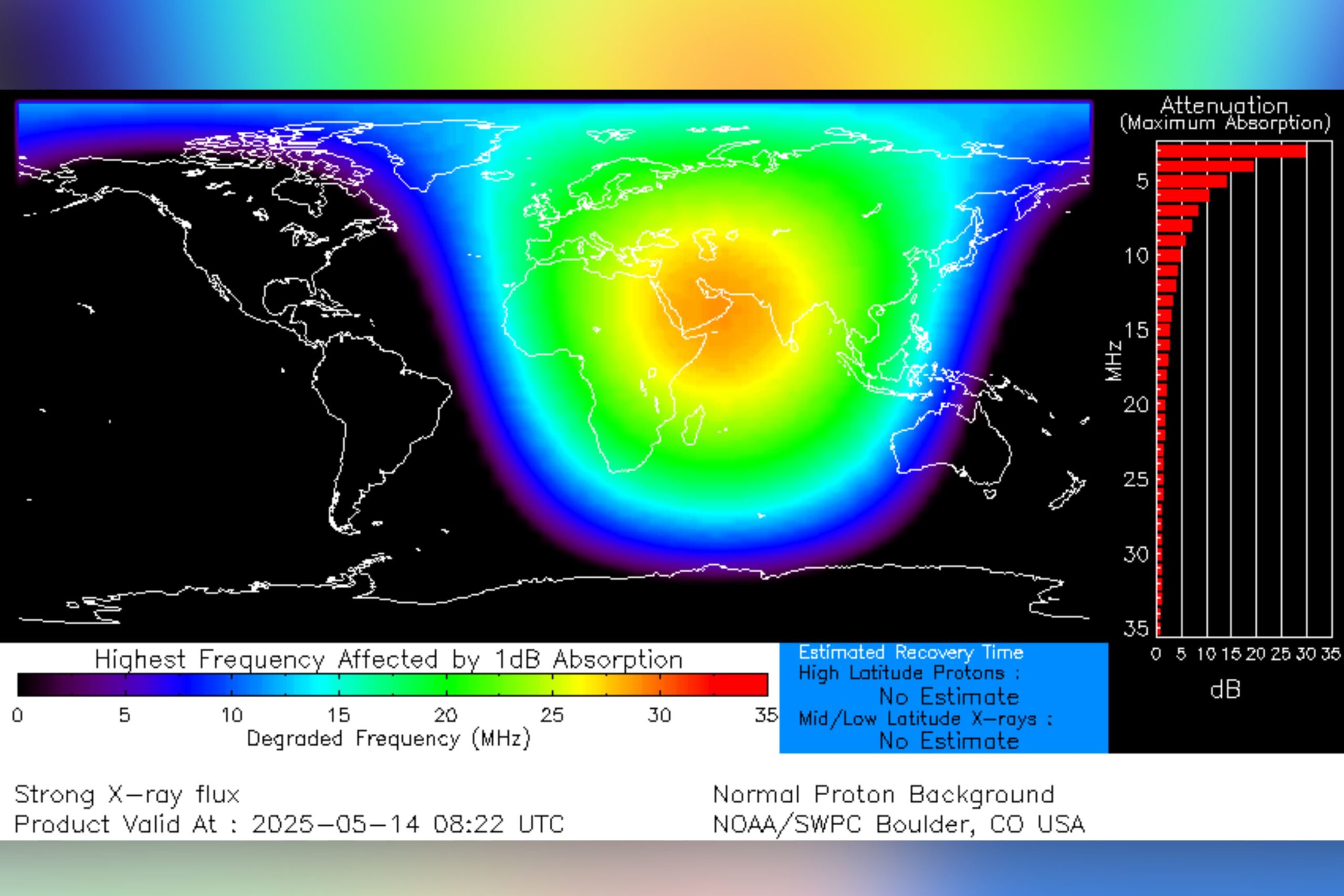
A powerful X2.7-class solar flare erupted from the sun early Tuesday, May 14, 2025, causing high-frequency radio blackouts across broad swathes of Europe, Asia, and the Middle East.
Why It Matters
Classified as an R3-level event on the National Oceanic and Atmospheric Administration (NOAA) radio blackout scale, the X2.7-class flare marked the strongest solar eruption of the year so far, according to Space.com. It released intense X-ray and ultraviolet radiation that ionized the upper atmosphere and interfered with radio-signal propagation. The NOAA categorizes and event of this magnitude as “strong.”
What To Know
The flare originated from sunspot region AR4087 and peaked at 4:25 a.m. EDT, according to the NOAA Space Weather Prediction Center (SWPC), disrupting communications on the sunlit side of Earth.
NOAA/SWPC
A map from the SWPC showed an impact area centered largely on the Middle East, with a less-intense zone over swathes of Europe, Asia, and Africa.
The SWPC said a flare is an eruption of energy from the sun that usually can last between minutes and hours. Flares of this magnitude are uncommon, the service added.
“Users of high-frequency radio signals may experience temporary degradation or complete loss of signal on much of the sunlit side of Earth,” the SWPC said.
Flares are categorized into five classes—A, B, C, M, and X—from smallest to largest. Each level represents energy levels 10 times higher than the last.
What People Are Saying
The Space Weather Prediction Center said: “An X2.7 flare was observed at 14/0825 UTC from Region 4087. This region has recently become active and also produced an M5.3 flare at 14/0325 UTC. No [coronal mass ejection] impacts are expected with either event.”
Northern Lights chaser Vincent Ledvina said on X, formerly Twitter, on Tuesday: “WOW, happening now: an X2.7 flare from AR 4087 rotating in. This is getting intense, especially as this active region turns closer into view.
“This same AR just produced an M5.3 flare a few hours ago. What does this AR have planned over the next days … we’ll have to wait and see.”
The U.K.’s Met Office Space Weather Operations Centre (MOSWOC) said on X, May 14: “R3 radio blackout in progress as a result of X1 solar flare at 14-May 08:17 UTC.”
SpaceWeatherLive said on X: “She doesn’t look all that impressive but sunspot region 4087 has a Beta-Gamma-Delta magnetic layout and has been responsible for numerous M-class solar flares and an X-class event today.
“It has one very tightly packed delta structure where sunspots of opposite polarity meet and cause the solar fireworks we all enjoy so much. Keep an eye on this region as it rotates in a more favorable earth-facing position in the days ahead.”
What Happens Next
Space.com reported that, should activity continue when this sunspot region faces the Earth again next week, any upcoming eruptions could impact geomagnetic activity and chances of auroras.
